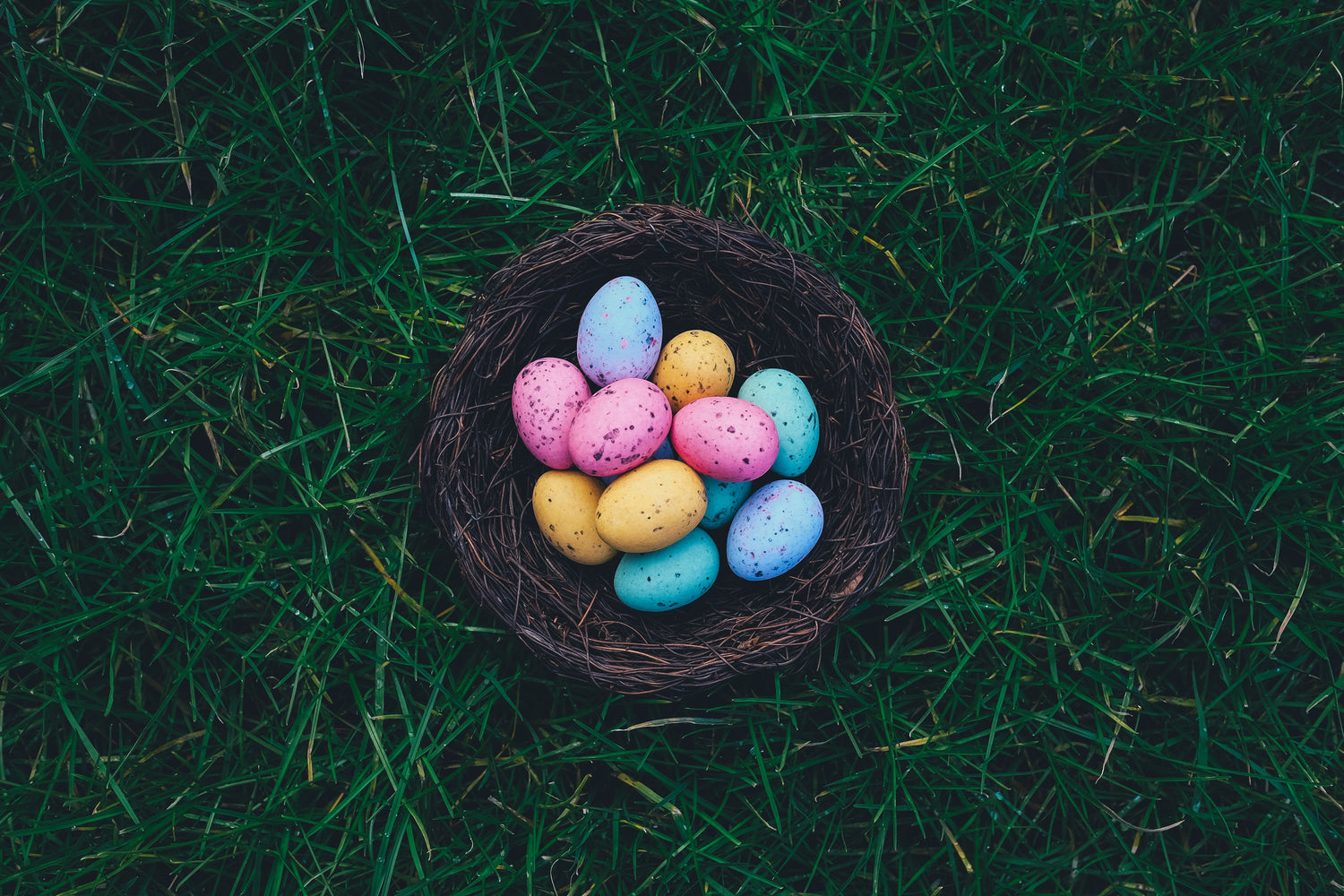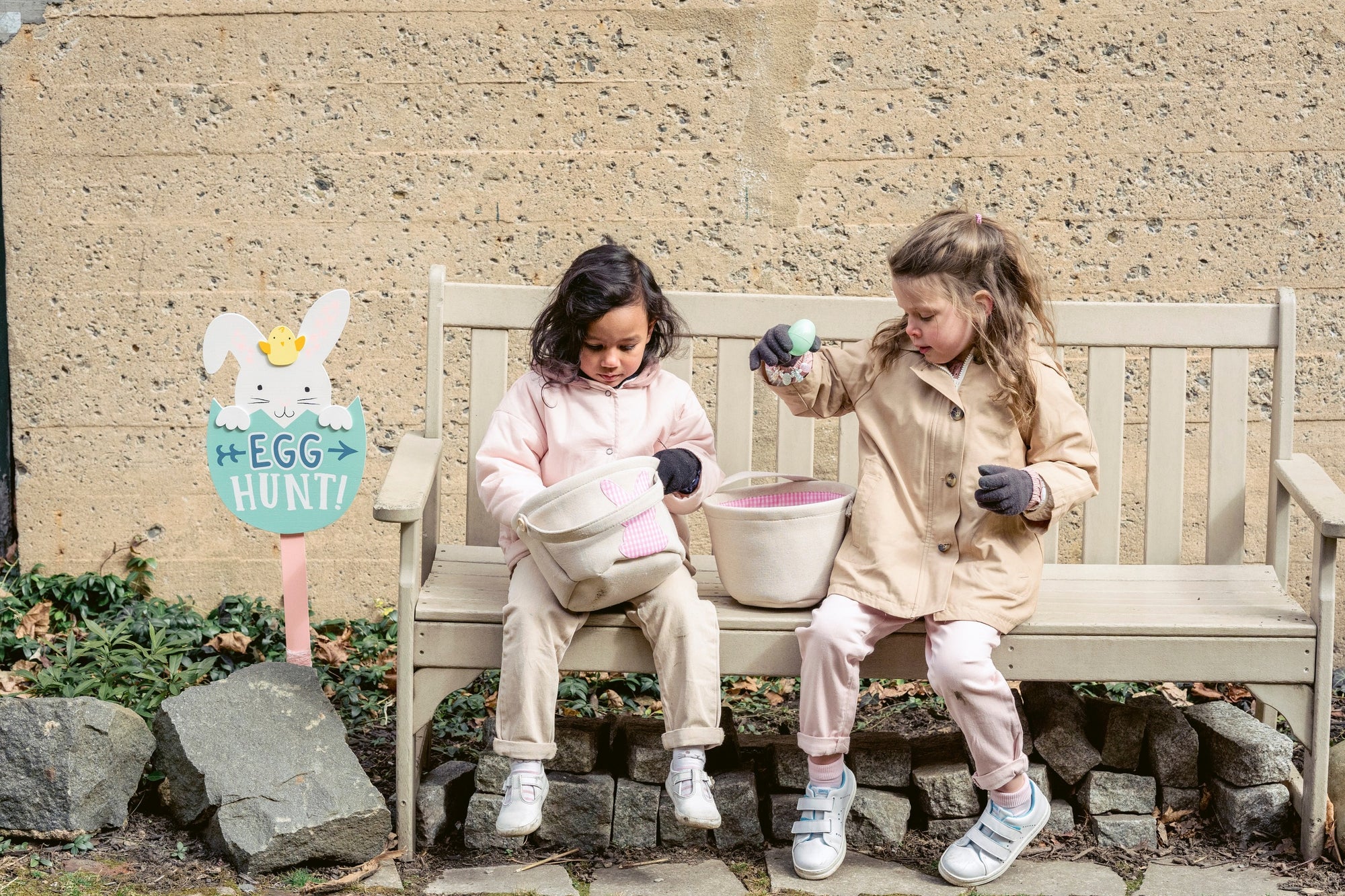At Love Cocoa, Easter means chocolate, chocolate and more chocolate. And we're not alone. Every year, we Brits eat between 80 and 90 million chocolate eggs! But why is chocolate such a big part of this spring holiday?
Of course, Easter is one of the most important religious festivals on the calendar, marking the crucifixion and resurrection of Jesus Christ. But it wasn't always a Christian celebration. Easter also occurs around the time of the Spring Equinox when the day and night are in perfect balance.
The Norse people celebrated this period of renewal and rebirth during the Ostara festival — named after their goddess of spring and renewal. Likewise, the Pagans marked the Vernal Equinox by painting eggs to symbolise the arrival of new life.
So when did Easter chocolate become so popular? And why do we eat chocolate eggs at Easter? Let’s take a closer look at the history behind our Easter traditions.
The origin of Easter eggs
Long before chocolate arrived from South America in the 1500s, people decorated and gifted eggs at Easter.
Eggs have always been a magical symbol that appears in mythologies worldwide. For example, in Ancient Egypt, Ra, the sun god, was said to be hatched from the same egg as the Phoenix. In Hinduism, the eggshell symbolises the heavens and the yolk, the earth.
In South Pacific mythology, heaven and earth formed when a cosmic egg split in two. And in the Australian Aboriginal Dreamtime, the sun is, in fact, the flaming yolk of an egg.
In Europe, there are plenty of folklore traditions based on the egg as a symbol of fertility. For example, farmers in Germany would smash eggs on their ploughs to ensure a good harvest, while in France, brides used to break eggs as part of a fertility ritual.
Decorated eggs
Since Pagan times, Ukrainians have decorated eggs honouring the sun god, Dazhboh. Known as ‘Pysanky eggs’, they're decorated with intricate and beautiful floral and geometric designs drawn in beeswax.
The practice of decorating and dyeing eggs spread like wildfire throughout the Eastern Mediterranean. Decorated eggs were known in the region 5,000 years before the birth of Christ. And in Eastern Europe today, they're often dyed red to symbolise Christ's blood.
Historians believe that these Pagan traditions became aligned with Christianity, and soon the egg was a potent symbol of Jesus's rebirth. Additionally, the oval shape resembled the stone that closed the mouth of Christ's tomb and was rolled away to reveal the tomb was empty.
Eggs at Lent
Fast forward to medieval times, and eggs were commonly forbidden during Lent. So if you've ever wondered why we celebrate Shrove Tuesday with pancakes, it was an easy way to use up any leftover eggs before Lent began.
So when Easter Sunday arrived, an egg was a delicious treat, and people would often bless them before giving them to the poor. Superstitions about Easter eggs soon thrived. For example, people believed an egg laid on Good Friday and eaten on Easter Day would prevent sudden death and enhance a couple's fertility.
In addition, a double yolk foretold wealth, and a Good Friday egg would eventually turn into a diamond — but only after 100 years!
On a roll
By the 18th century, brightly decorated hard-boiled eggs were popular for egg rolling.
Known as ‘pace eggs’, they were gifted to children and actors in pace egg plays. These morality tales usually featured the hero slain by the villain, only to rise from the dead and defeat the evildoer. The tradition of egg rolling is thought to be linked to the symbolism of rolling the stone away from Jesus's tomb. These days, the most famous egg roll takes place every Easter on the White House lawn in Washington, DC.
Gifting eggs
Not surprisingly, decorated eggs have also appeared in more elaborate forms. For example, in 1290, Edward I ordered 450 eggs to be covered in gold leaf and given to members of his household.
In Russia, gold and silver decorations became the norm, and in 1883, the jeweller, Faberge, created the first of his fabulous eggs. Gifted by Empress Marie to her husband, Tsar Alexander, it was a smaller gold egg nestling in an enamel and platinum shell. It soon inspired other artisans to create their own fantastic eggs from jewels and precious metals.
By the 18th century, papier-mache eggs were all the rage, their hollow insides often hiding a gift.
By the 1900s, the outer shells were made of cardboard and lavishly decorated with ribbons and lace…
Why do we now have chocolate eggs at Easter?
So when did the chocolate come in? How did the tradition of gifting decorated poultry eggs transform into the sweet treats we know and love today?
French and German chocolatiers started the tradition sometime in the 19th century. But their eggs were solid, hard and bitter. Fry's created the first Easter egg in 1873, but Cadbury's refined the process to create the delicious hollow eggs we know today.
The secret to John Cadbury's success? Cocoa butter. This edible and 100% vegan fat with a strong cocoa aroma and flavour is extracted from the cocoa bean itself. And because it melts at just below body temperature, it gives chocolate a moreish melt-in-the-mouth quality.
In addition, cocoa butter gives the chocolate a desirable snap and glossiness. It also reduces viscosity, making the chocolate much easier to mould.
After releasing their first egg in 1875, Cadbury's quickly perfected the art of the hollow chocolate egg. Something that James Cadbury — John Cadbury’s great-great-great grandson — has brought right up to date with Love Cocoa. From vegan Easter eggs to luscious flavours like salted caramel and strawberries and cream, our Easter chocolate offers a feast for the senses.
What about chocolate bunnies at Easter?
So now we know why chocolate eggs at Easter. But where does the legend of the Easter Bunny come from?
Let's go back to the old Pagan legends and the goddess Eostre. Her symbol was a rabbit, an animal long associated with fertility. But how did the Easter Bunny end up in America's famous Easter Parade?
It seems the fabled creature travelled to the US with German immigrants in the 1700s. The legend of "Oschter Haws" or "Osterhase", the egg-laying hare, quickly took root.
Soon, children were building nests and leaving carrots so the Easter Bunny would reward them with colourful eggs. Over time, real eggs were replaced with chocolate, and other treats, including toys and sweets, were soon added to the Easter basket.
Other Easter traditions
But the Easter Bunny isn't the only creature associated with the spring holiday. Egg-laying hens are an obvious choice. But in parts of Germany, the Easter Rooster brings the eggs, while in Switzerland, they celebrate the Easter Cuckoo. Since 1991, Australia has campaigned to replace the Easter Bunny with the Easter Bilby — an endangered native marsupial with enormous ears and a long fluffy tail.
The sight of lambs gambolling in the fields is a sure sign of spring approaching. But lambs are also associated with Christ's sacrifice and the sacrificial lamb of the Jewish Passover festival.
You'll often see chocolate lambs in the windows of European chocolate shops, which are packed with extravagant delights at Easter as chocolatiers bid to outdo each other with their creations.
In France, the Easter bunny is replaced by the Easter bell. Legend has it that when the church bells are silent between Maundy Thursday and Easter Sunday, they fly to Rome to be blessed by the Pope. On their return, they scatter eggs in children's gardens, ready to be found and eaten at Eastertime.
Why not celebrate the Easter Bunny with a delicious bunny honeycomb bar?
Find delicious Easter chocolate gifts at Love Cocoa
The Easter egg has been on an incredible journey, from simple decorations to fabulous jewelled creations and delicious chocolate delights. It seems you can't celebrate Easter without eggs.
For many of us, Easter is an excuse to enjoy a long weekend indulging in an endless supply of delicious cocoa-based treats. But the beauty of giving Easter eggs as gifts is that they still have a spiritual and religious meaning, however you choose to celebrate the holiday.
At Love Cocoa, we have Easter chocolate gifts to suit everyone, from your favourite vegan to the love of your life. So shop online today and enjoy a delicious and indulgent Easter with eggs and other treats from Love Cocoa!

